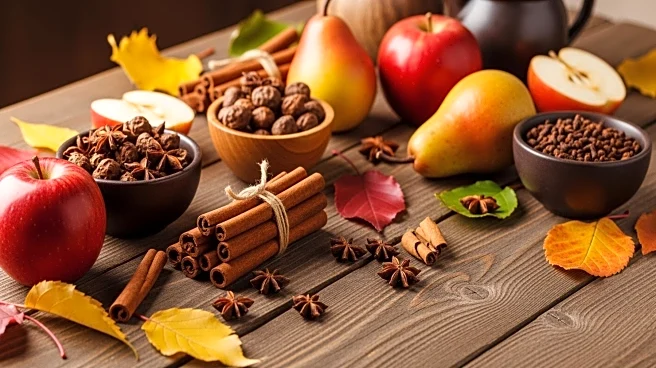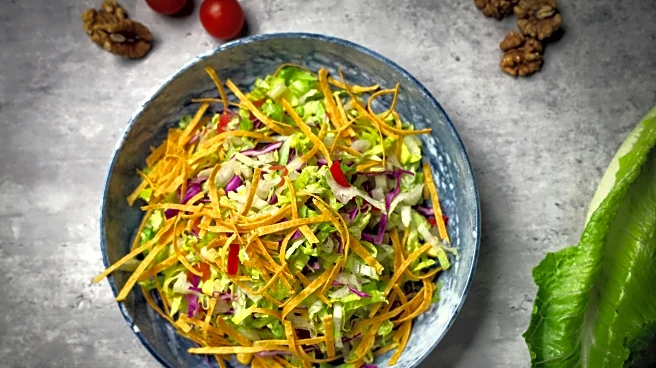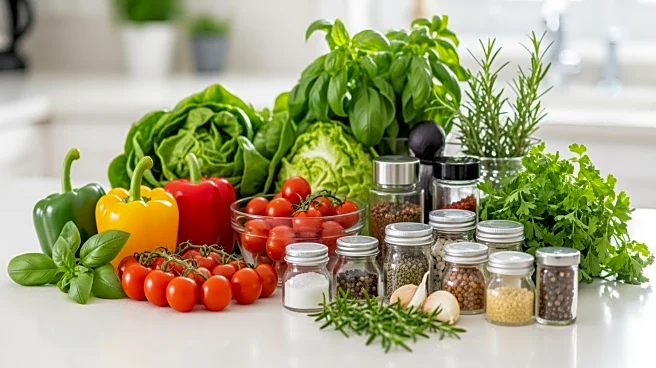What's Happening?
The food and beverage industry is witnessing a shift in consumer preferences as traditional fall flavors like pumpkin spice face competition from emerging flavors such as apple cider and apple cinnamon.
According to a study by Rubix Foods, 51% of surveyed consumers expressed interest in new fall-themed flavors, while 47% considered pumpkin spice overrated. Apple butter emerged as the top fall flavor, with 49% of respondents wanting to see it on menus. The study highlights a growing trend towards flavors that balance familiarity with novelty, such as maple, mocha, and matcha, which have gained momentum since 2024. Industry experts note that apple flavors align with current trends of nostalgia, indulgence, and comfort food, making them appealing during the holiday season.
Why It's Important?
This shift in consumer preferences could have significant implications for the food and beverage industry, particularly for companies that have heavily invested in pumpkin spice products. As consumers seek new and diverse flavor experiences, businesses may need to innovate and expand their offerings to include emerging flavors like apple cider and maple. This trend also reflects broader consumer desires for personalization and seasonal experiences, which could drive product development and marketing strategies. Companies that successfully adapt to these changing preferences may gain a competitive edge, while those that rely solely on traditional flavors risk losing market share.
What's Next?
As the demand for new fall flavors grows, food and beverage companies are likely to introduce a wider variety of products featuring apple, maple, and other trending flavors. This could lead to increased competition among brands to capture consumer interest and loyalty. Additionally, businesses may explore pairing traditional flavors like pumpkin with new elements such as chai or brown sugar to create innovative offerings. The industry will need to closely monitor consumer feedback and market trends to stay ahead of evolving preferences and maintain relevance in a competitive landscape.
Beyond the Headlines
The rise of new fall flavors also highlights the cultural significance of food as a means of evoking nostalgia and creating memorable experiences. As consumers seek comfort and indulgence through flavors that remind them of past seasons and traditions, the food industry plays a crucial role in shaping these experiences. This trend underscores the importance of understanding consumer psychology and leveraging it to create products that resonate emotionally with consumers.












